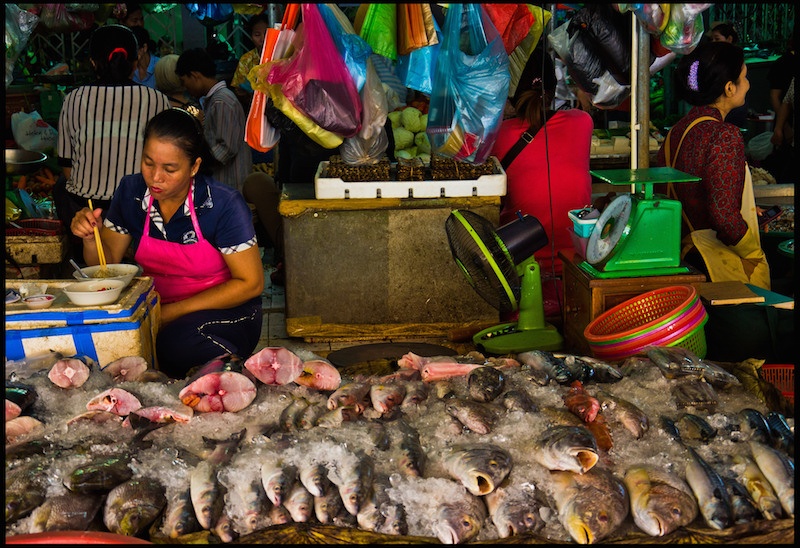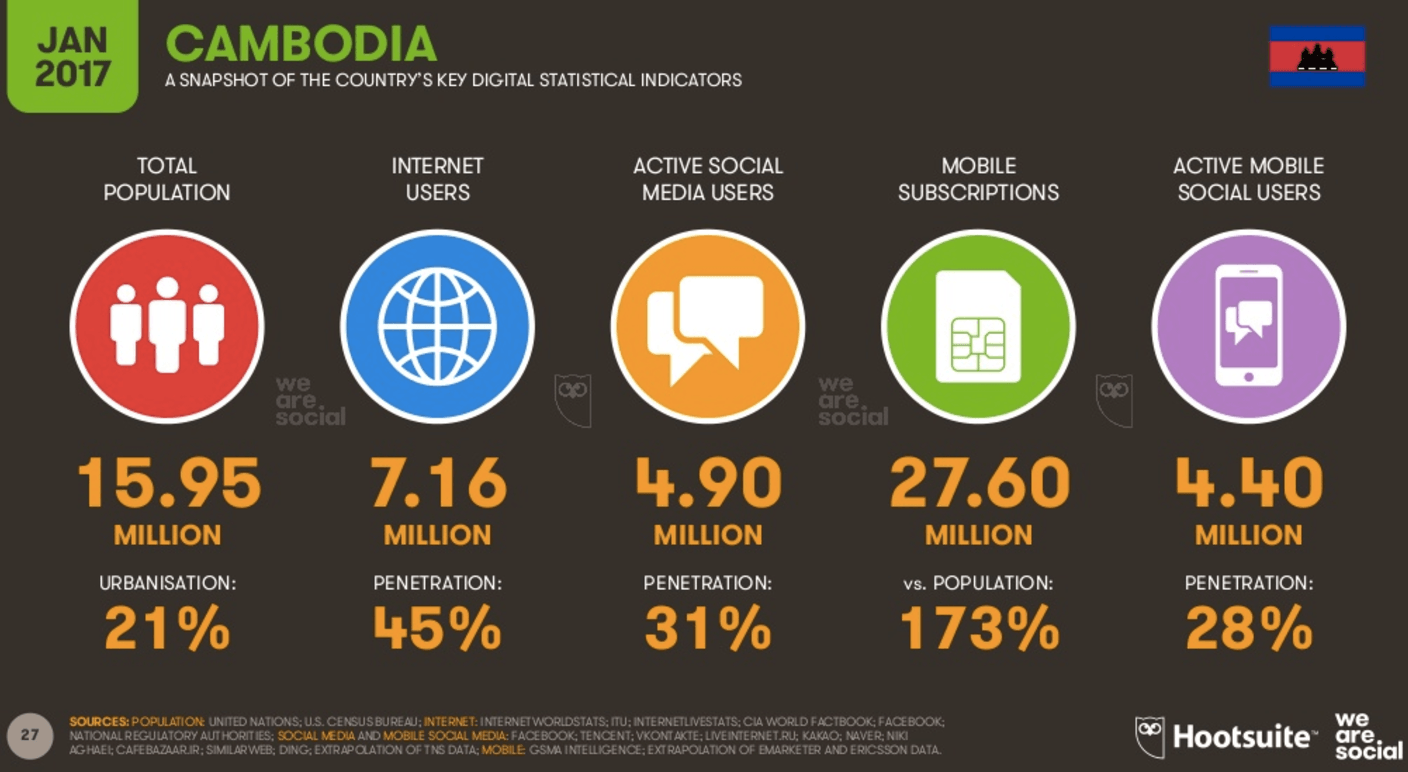
Vichet In (middle), and his brothers Visal (L) and Vichea (R). Image credit: Khmerload.
“Often, you come across entrepreneurs who have no traction, no market position, and are asking for a lot,” Khailee Ng, partner at VC firm 500 Startups, told me recently.
Khailee, whose appearances at tech conferences in Southeast Asia have become famous, is known for not mincing words.
When Vichet In from Cambodia dropped him a message on Facebook a few weeks ago, Khailee saw this was a different story.
Vichet pitched Khmerload, a media company he’d been working on with his brothers Vichea and Visal since 2011. Without venture capital, the site had grown to rank among the most popular in Cambodia.
“I messaged him that we have a good startup, that it could possibly get to one billion page views,” Vichet recalls.
Within days of that first contact, they struck a US$200,000 deal. Khmerload became 500 Startups’ first Cambodian investment. The Silicon Valley-based VC firm has backed dozens of Southeast Asian startups since 2013, but Cambodia just hadn’t posed the right opportunity.
“What they achieved on a lean budget can only be magnified by additional venture capital investment. It’s not very often you come across this,” says Khailee.
Here’s a couple of things Khmerload got right.
Sense the opportunity
The startup officially dates back to 2011, but its story really begins one year earlier.
Vichet, together with his two brothers Visal and Vichea, and his sister Mayan, started their first online business – an ecommerce site called Little Fashion. They didn’t know this from the start, but growing both businesses in parallel would lead to synergies.
We did all sorts of things to get sales.
Vichet says he was searching for a gift for his girlfriend when he came across a wholesale retailer in China. He quickly did the math. If he ordered a minimum of 20 pieces, and sold the other pieces in Cambodia, he could turn a small profit.
It worked. “First we sold on Facebook, then our own website, then we had our first physical showroom,” Vichet says. As the orders got bigger, Little Fashion started stocking some of the most popular items so that delivery could be quicker.
“We did all sorts of things to get sales,” Vichet says. Whether people commented on image posts and videos, or contacted them through Facebook or by phone, every request was handled. “We don’t push them too much to use the website or app.”
Serving customers better

A market in Phnom Penh. Image credit: Guillén Pérez.
The little kingdom Cambodia, with just under 16 million people and a GDP per capita lower than its regional neighbors’, isn’t a perfect launchpad for big tech ventures.
Ambitious ecommerce players haven’t been able to crack it. Rocket Internet made an early attempt to enter the market in 2012, and again in 2015 with its marketplace Kaymu. At that time, it seemed like ecommerce might take off in the country.
But Kaymu, an open marketplace that let individuals sell to one another, also didn’t last long.
It was merged in 2016 with another Rocket Internet business called Daraz – a managed marketplace that has more control over the quality of products and customer experience. As a result, Kaymu Cambodia was shut down.
In Vichet’s view, Rocket Internet’s Kaymu failed to adequately address the needs of the Cambodian customer, who are, in his eyes “very demanding.” In Cambodia’s nascent ecommerce scene, Kaymu’s open marketplace couldn’t guarantee a consistently smooth shopping experience.
“[The merger] would mean a change of business model in Cambodia […] and we decided to focus on our core markets for now,” says Bjarke Mikkelsen, who leads Daraz’ Asia operations. But he thinks fundamentally, the market in Cambodia is not very different from others. “We still see big potential in the medium term.”
Little Fashion’s hands-on, customer service-heavy approach seemed better suited to serve Cambodian customers for now, but it’s also not easily scalable. That’s why Vichet began exploring other opportunities to make money online a year into Little Fashion’s start.
Playing two games at once
His approach was simple. He checked on website ranking tool Alexa what sites Cambodians were already visiting.
He dropped his PhD program in the US to become CEO of his startup in Cambodia.
The brothers began building a site that tapped exactly into what people were already looking for: news content and downloads, like movies and games. That’s where Khmerload got its name.
The downloads section – which was illegal, but helped draw attention in the beginning, Vichet admits – was soon dropped.
Vichet, like his brother Vichea, was still enrolled in a PhD program in the US and now saw the need to dedicate himself to Khmerload full time. He dropped his PhD in economics – for which he’d got a scholarship through the IMF – to become CEO of his startup.
Vichet and Vichea focused on writing content, while Vishal, who was also in charge of the technical aspects of Little Fashion, built the site. Mayan stayed with Little Fashion, where she was handling the merchants.
The thriving Facebook fanpage they had created for Little Fashion came in handy. This is where they first promoted Khmerload’s content.
“Within two months we managed two to three million page views, we were among the top three to five websites.” Vichet recalls.
Khmerload had an early mover advantage.
No one was focusing on shareable content in Cambodia, so things went viral easily, Vichet says. Traditional media didn’t have websites yet. For bigger international media companies, producing Khmer language content probably wasn’t worth the effort. The Yahoo news portal, for example, targets populous countries like Indonesia with localized content, but never did the same for Cambodia.
The only serious local competitor was Sabay, a portal for entertainment news that’s also self-funded, cross-financed through its game distribution channel and development studio. According to Alexa traffic ranks, Sabay is one step ahead of Khmerload at this point in Cambodia.
Making money
Khmerload’s growing popularity didn’t go unnoticed. Advertisers started calling, and Vichet began selling them space for banner ads.
“We never had a sales team” says Vichet. “ When I tried to contact them directly, they didn’t value us.”
The lesson he got from that: Just focus on content and getting people to visit your site. The rest will follow.
Khmerload’s content formula hinges on shareability, which makes sense in Cambodia, where most people are exploring the internet through social networks on their mobile phones.
“In the early days, we picked the trending topics on social media. The articles are guaranteed to be socially viral with lots of comments,” Vichet explains.
As the editorial team grew, groups specialized in content verticals like sports, local celebrity news, fashion, and food tips. Khmerload also has educational material for students in video form.

What the Khmerload office looks like these days. Image credit: Khmerload.
News articles that deal with crime, traffic accidents, or drug abuse cases are bought from existing local newspapers and added to the mix. “It requires too much staff to do that in-house,” explains Vichet.
In Cambodia people see our content every day. They cannot escape it.
There’s also content contributed from readers, about two to three posts a day, Vichet says. The editorial team reviews and rejects these posts if they do not meet quality standards.
No longer dependent on sister site Little Fashion’s Facebook page, Khmerload now has its own distribution channels.
“We have our website, Facebook pages, Line Official Account, and Facebook chat bot to distribute the content,” Vichet says. “In Cambodia, people see our content every day. They cannot escape it.”
Khmerload currently has 17-18 million monthly page views, according to him. That’s with just over 7 million internet users in the country.

Image credit: We are Social.
How to land a top VC
At first, Khmerload didn’t need money. But it was reaching the limits of what was possible with banner ad monetization. As Vichet’s ambitions grew over the years, he started to think about how venture capital could catapult the startup to its next phase.
To attract the interest of VCs, Vichet knew he had to offer something bigger than Cambodia’s small market. He decided to take a chance and attempt to replicate Khmerload’s model in Myanmar. With almost 55 million people, some 14 million of them online and the rest rushing to follow, this was an opportunity worth chasing.
By September 2016, Myanmarload had launched and was seeing some 2.5 million unique visits a month, according to Vichet.
To first test the water with VCs, he didn’t even leave Cambodia – Vichet participated in Tech in Asia’s online pitch sessions and started mingling in startup-related Facebook groups to ask for advice.
Khmerload got positive feedback, but Vichet had his eyes set on someone in particular: Khailee Ng.
“I knew I had to pitch to him because they had done something similar in Malaysia,” Vichet says.
Before joining 500 Startups, Khailee had built and exited media company Says.
Convinced Khailee was the perfect match, Vichet decided to drop him that fateful Facebook message in March. It hit a nerve.
“I understand the way media ecosystems evolve. It’s something that I can immediately appreciate and that made the decision very easy,” Khailee recalls.
What’s coming
Khmerload and Myanmarload are still a small and lean team, with 15 people in Cambodia and 11 in Myanmar.
“Video content is the focus for this year. We will produce online shows,” says Vichet.
And now, the startup is finally ready to build a sales team, as branded content is supposed to ramp up revenues.
All this while, Little Fashion has been keeping them busy, too.
“We’re still developing it, still bootstrapping,” Vichet says. “We turned down an investment offer a few years ago. We are comfortable with that.”
Meanwhile, both businesses continue to complement each other. A production studio they built can be used both ways, for shooting fashion photos and for content for the media sites. These days, it’s Khmerload that helps drive traffic to Little Fashion.
This post How a bootstrapped media company became 500 Startup’s first investment in Cambodia appeared first on Tech in Asia.
from Tech in Asia https://www.techinasia.com/bootstrap-lessons-khmerload
via IFTTT
No comments:
Post a Comment